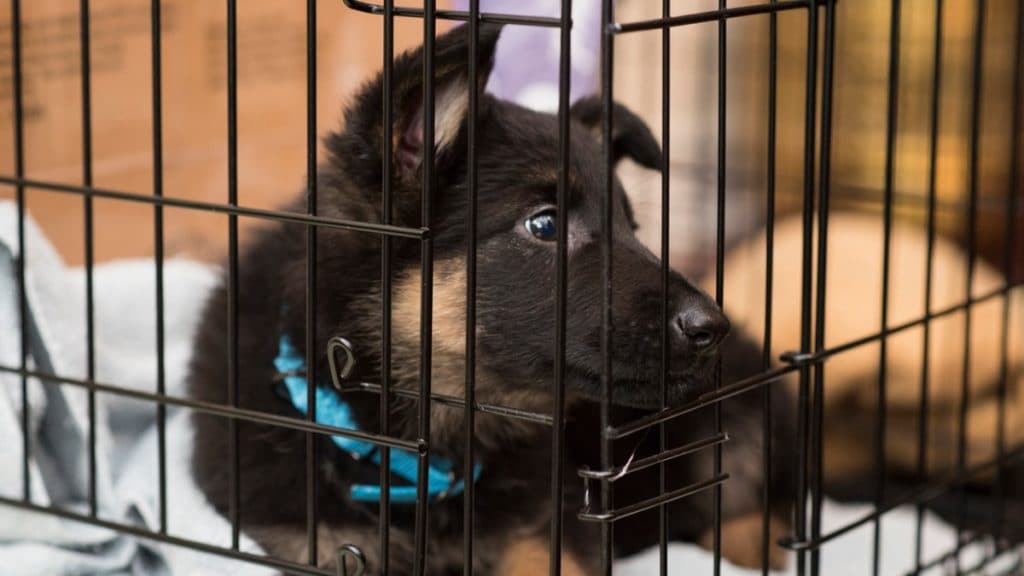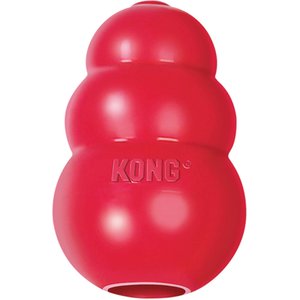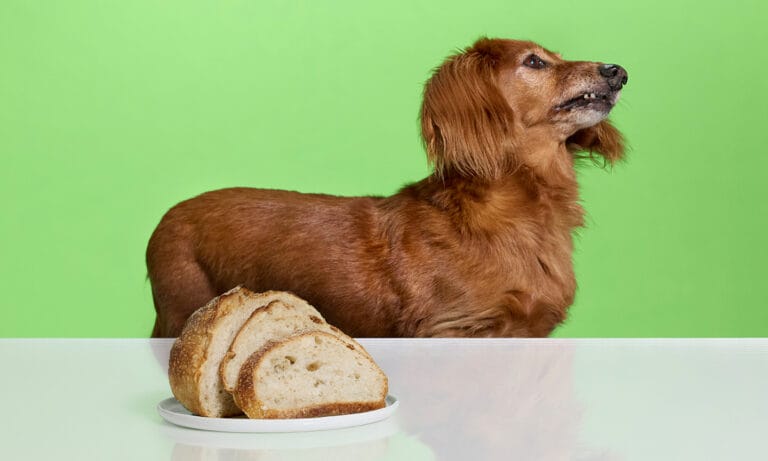Dog kennels and dog crates are wonderful and useful tools at home. You can use a dog crate for things like potty training, for creating the ultimate safe zone for your pet and, when strapped-down, for road trips with your canine companion. Dog crates or dog kennels also come in handy for emergency situations, like when a natural disaster strikes.
Teaching your dog to be comfortable in a dog crate is well worth the time and effort. Some pups are uncomfortable in dog kennels because of past experiences or never having to settle quietly in a dog crate before.
If your dog acts anxious or rambunctious in his dog crate, these dog training tips can help you teach him to be calm in his crate.
4 Simple Tricks to Keep Your Dog Calm in His Crate
1. Get a New Dog Crate
It’s much easier to teach your dog to relax in a dog crate if he doesn’t have strong feelings about the dog crate itself. Starting over with a different dog crate is especially important if your pet’s association with his current dog crate is a negative one.
Also, if your dog has outgrown his dog crate, he may not like going inside of it because it’s no longer comfortable. In this case, it’s time to upgrade. Frisco’s Heavy Duty dog crate comes with a divider that allows your dog to grow into the crate. Find out how to pick the best size dog crate for your pup.
2. Never Force Your Dog Inside the Crate
Starting today, pledge to yourself—and to your pup—that you will never push or pull him into or out of the dog crate. While you’re at it, promise not to shut him in the dog crate before he is comfortable with it.
3. Make the Dog Crate More Comfortable
Adding a comfy cushion, like Frisco’s quilted fleece pet bed and crate mat, will help make the inside of your dog crate more inviting and pleasant. Some dogs prefer a covered dog crate. Try MidWest’s Quiet Time crate cover to see if your furry friend prefers to enter the dog crate when the cover is on or off.
Putting some of your pet’s favorite toys or blanket inside may help create a tranquil space for your dog. Calming dog supplements, like Only Natural Pet’s Just Relax, also can help your pupper feel calmer in and out of his dog crate.
4. Hide Treats in the Dog Crate and Keep it Shut
When your dog is not in his crate, sneak some treats inside and keep the door shut. K9 Natural lamb raw freeze-dried dog treats are all-natural and made of 100% raw New Zealand lamb. The concept is: We want whatever we can’t have.
Put dog treats, a favorite chew toy or a stuffed food toy inside the dog crate, and then lock the door. Leave the door locked long enough for your dog to notice what’s inside his crate. Then open the door for him.
If you add treats when your dog walks in on his own, he may never want to come out!
Using Mealtime to Get Your Pet to Love His Dog Crate
Moving mealtime to the dog crate is a great way to get your pet to view the crate as a happy place.
1. Start by Feeding Meals in an Open Crate
Start by feeding your dog his meals inside the crate, leaving the door open the entire time.
Keeping the door open shows your doggo that he’s not going to get locked in. Being able to leave anytime makes the dog crate less scary for him. If your dog refuses to eat inside the dog crate, place the food as close to the dog crate as he will eat and gradually inch the food inside.
2. Briefly Shut the Door Partway
Once your dog is eating comfortably inside the dog crate, briefly shut the door partway in the middle of his meal. Also, add treats after you move the door.
This is not a game of “gotcha.” Shut the door only as far as your dog can handle, which may not be all the way.
If your dog seems nervous as you move the door, immediately open the door again. If your dog stays in the crate even after you move the door, drop in some dog treats. After a few seconds, open the door wide.
Note: If your dog tries to get out while you’re shutting the door, or when it’s shut, let him. Next time, shut the door less or keep it closed for a shorter period next time. With practice, you’ll be able to shut the door and keep it closed longer. The key is to work within your dog’s comfort level.
3. Extend How Long the Door Stays Closed
After your dog is comfortable eating in the crate when the door is shut briefly, you can begin increasing the amount of time you leave the dog crate door closed.
Drop in treats while the door is shut. Open the door any time your dog tries to get out and make a mental note to make things easier next time.
You also can switch from using a dog bowl to giving your pup a KONG Classic dog toy stuffed with a mixture of canned and dry dog food. It takes longer for dogs to finish meals in food toys, which translates into more time spent pleasantly in the crate.
4. Watch Your Dog’s Behavior Inside the Crate
Some dogs start whining as soon as the food toy runs out. If this happens, watch your pup and the clock carefully and leave him in there for only moment or two after the food toy is empty.
You can build up gradually, one second at a time, to longer periods in the crate after the food toy runs out.
Most puppers naturally are inclined to like small, enclosed spaces like dog crates, dog kennels and dog house. Some dogs need more help to learn to enjoy crates than others, though.
Be sure to stay within your individual dog’s comfort zone as you work on this behavior and use these dog training tips. With patience (and treats!), your pup will learn to be happier and calmer in his dog crate.
Take The Odor Battle To The Home Front
After you’ve figured out the cause of your dogs odor and address the problem, the next step is to get your home smelling good, too.
No one knows how to tackle tough indoor doggie odor better than business owners and purebred hobbyists.
George Bernard, owner of Silver Trails: The Animal Inn, washes the floors and walls of his Westbrook, Connecticut, kennel with a food-handling product that kills bacteria and odors on contact.
It’s the same thing that’s used on butcher blocks in butcher shops, so its edible, says Bernard, whose boarding facility houses up to 150 animals. You can actually have a dog lick the floor and he won’t get sick.
Booth, a groomer for 26 years, doesn’t use any special cleaning liquids. Instead, she plugs in an ionic air purifier to help freshen her 300 square-foot shop.
Dalmatian breeder Elaine Gewirtz tries to prevent odors before they start by cleaning her Southern California home on a regular basis. Every week she vacuums carpets and washes floors. Each of her three dogs beds has removable covers, making them easy to launder. She also opens windows frequently to air out the home.
Gewirtz has noticed that dogs left outside during the day while their owners are at work pick up unpleasant odors, which they then bring indoors. She recommends wiping down dogs with a damp cloth or brushing them with a dog brush before letting them in the house.
Share:















